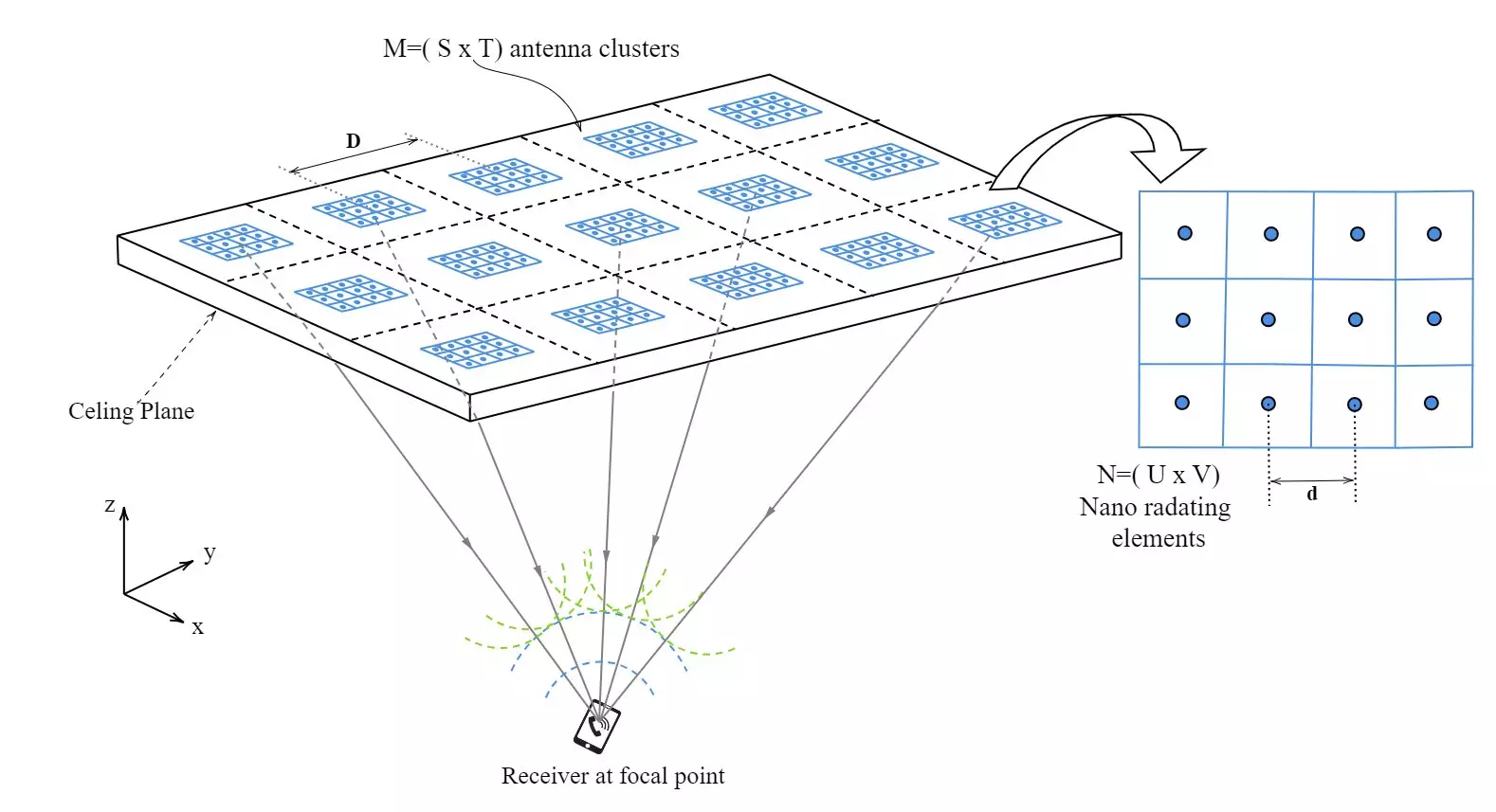As our reliance on digital communication grows, so too does the demand for efficient, high-speed data transmission. Traditional wireless communication methods, particularly Radio Frequency (RF) technologies like Wi-Fi and Bluetooth, face notable challenges in keeping up with this surge in demand. Issues such as bandwidth limitations and increased signal congestion are becoming increasingly prevalent, leading to a quest for innovative solutions that provide both speed and reliability. In this landscape, Optical Wireless Communication (OWC) has emerged as a promising alternative, poised to utilize light for better connectivity. Our research investigates the potential of OWC to address the limitations of existing technologies through a sophisticated approach leveraging infrared (IR) signals.
At the core of our research lies a groundbreaking concept termed the “phased array within a phased array.” This model is inspired by principles from quantum mechanics—specifically, the superposition principle. In quantum mechanics, particles can exist in multiple states simultaneously until a measurement is made. Similarly, our OWC system consists of multiple smaller optical antennas organized into larger arrays. These antennas work in concert, their configurations precisely calibrated to enhance the quality and clarity of IR signal transmission.
Unlike traditional methods that rely heavily on singular transmitters, which are susceptible to interference and physical obstructions, our method employs clusters of transmitting elements. This multi-faceted approach drastically improves signal robustness. Each antenna cluster can dynamically adjust its output, much like overlapping quantum states, allowing for clearer communication even in environments filled with potential disruptions.
A key differentiator of our system is its adoption of dual transmission wavelengths. This innovative feature not only sharpens the precision of the transmitted signals but also stabilizes performance under varying conditions. By distributing signal transmission across multiple wavelengths, our configuration mitigates the risk of signal degradation, even when clusters are spaced further apart.
Furthermore, this sophisticated mechanism offers significant advantages in terms of energy efficiency. Traditional wireless technologies often waste substantial amounts of energy as they maintain functionality across all network components continuously. However, our system employs an Ant Colony Optimization (ACO) algorithm, designed to activate only necessary clusters at any given time. This smart resource allocation mimics the way ants autonomously navigate to food sources, promoting energy conservation and reducing operational costs. By selectively powering down idle clusters, our approach not only optimizes performance but also champions sustainable practices critical in today’s environmentally conscious world.
The potential applications for our advanced OWC system are extensive and varied. Industries that necessitate secure and reliable communication, such as health care and manufacturing, stand to benefit greatly from our innovation. As organizations increasingly seek to improve their internal communications infrastructure, our research lays the foundation for future developments aimed at creating more resilient networks that can meet their evolving needs.
Moreover, the principles established in our design are not confined to infrared wavelengths. The versatility of our research holds promise for further adaptation across different wavelengths as communication technologies advance. This scalability ensures that our innovations can integrate with future developments in wireless communication, providing long-term utility in an ever-evolving digital landscape.
Our exploration of optical wireless communication systems marks a crucial step toward revolutionizing how we engage in daily communication. This is not merely a pursuit for enhanced speed; rather, it’s about redefining connectivity itself—enabling smoother, more reliable, and sustainable wireless networks in the future. As we continue to innovate, we hope to inspire the broader scientific community to recognize the benefits and possibilities that OWC represents. The path towards transformative communication is not just about overcoming existing challenges; it’s about envisioning a connected future that is efficient, resilient, and environmentally responsible. Embracing these technologies will undoubtedly reshape our digital interactions and improve the landscape of wireless communication globally.


Leave a Reply